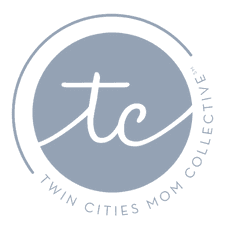If you are thinking about starting the garden you have always dreamed of – now is the time to start planning. Let this Beginner’s Guide to Gardening be your step one!

It’s always been my dream to plant a garden.
I’ve imagined carrying babies in the wrap through the garden. Watering my new plants with my vintage watering can. Tiny hands covered in dirt as we would harvest our first zucchini of the season. The joy of telling my children to grab a snack from the garden. Planning our meals around what was ripe and ready to eat. Cool evenings, after the littles are in bed, filled with weeding and watching the sun set on the horizon. Dropping off handpicked bouquets with little notes to people we love. The opportunity to bless others in our neighborhood and community when our garden fills with an overabundance of produce, allowing us the opportunity to give food to nourish those in need…
With all of these dreams in my heart, the time has finally come. After buying our first home and having a baby, I was ready to bring my gardening dreams to fruition. What I didn’t realize is how little I truly knew about gardening, I was and still am a total first time gardener. With big dreams and zero knowledge, I had lots to learn before our planting season would begin. The dreaming quickly turned into researching, learning “gardening lingo,” mapping out the layout of each bed, and determining the planting schedule for my garden.
After checking out every gardening book from the library, asking lots of questions to my gardener friends and researching everything I thought there was to know about planting a garden, I learned that gardening would take a lifetime of learning, to view our garden as a gift and to find joy in being a “first time gardener,” with lots to learn about this new world that lie ahead.
With that said, from one new gardener to another, here is truly a Beginner’s Guide to Gardening, filled with basics – terms to know, concepts to consider, ideas to share and a starting point for all the new mama gardeners out there. While I believe that all of those visions of raising my sweet babes in the garden will someday come to fruition, we all have to start somewhere. So, from one new gardener to another, here’s what you need to know:
Types of Gardening
Now that you’ve decided to start a garden, you will need to consider which type of gardening you will pursue. Here are some of the most common options to consider, according to The Old Farmer’s Almanac.
In-Ground
The most traditional garden consists of a simple in-ground garden bed, which is a plot of land in which the soil has been dug up and rocks, roots, and weeds have been removed. Plants are grown directly in the ground.
Raised Rows
This technique is essentially a hybrid between traditional in-ground gardening and raised beds. A raised row is exactly what it sounds like: a raised area of soil and other organic materials—such as compost, shredded leaves, mulch, or straw—that is formed into a sort of row or hill.
Raised Beds
A raised garden bed is essentially a large, bottomless container that sits on top of the ground. It is typically a frame of wood, stone, or concrete that is built to your specifications, which is placed in a sunny spot and filled with good-quality soil.
Container Gardening
When space is limited, container gardening is a great option! Rather than sowing seeds or planting directly into the ground or a larger raised bed, all you need for container planting is any pot, soil and sunlight, which will also allow you more control over growing conditions.
If you are looking for more garden options, considering the pros and cons to each type of gardening or are still deciding which route to take, click here for more information.
The Keys to Gardening
Sunlight
As you are planning and preparing your garden, one of the most important components to consider is the amount of sunlight your garden will receive. If you are hoping to grow an abundance of produce, sunlight is key. On average, most vegetables thrive with at least six to eight hours of direct sunlight each day. Be sure to determine the location of your garden with sunlight in mind!
Soil
The composition of your soil is important as you are preparing your garden for planting. Starting your garden with great soil will lead to healthy, thriving plants! If you are planning to garden in-ground, you will need to add organic matter each year to build and maintain the soil. If you will be growing your garden in raised beds or containers, you will be selecting the soil you will need to fill your garden. As a rule of thumb, it is recommended that your soil consists of 60% topsoil, 30% compost and 10% potting soil. For most gardens, it’s best to consider having your soil delivered, based on the size of your gardens, if you fill your gardens this way, many soil delivery companies will have a soil mix including each variety that is important to have great soil!
Water
As you are planning the location of your garden, make sure to think about your water source. If you are planning for a larger garden, you will want to have easy access to water from the hose. If you are planning smaller pots or containers, a watering can will allow you to locate your gardens wherever you like. Another option for watering is called “drip irrigation,” which is actually the most efficient way to deliver water and nutrients to your plants. If you are planning a large garden or hope to expand your garden in the future, this would be a great option to look into for watering.
When it comes to knowing when and how much to water your garden, the rule of thumb is to test the soil with your finger. If you push your finger an inch down into the soil and the soil is dry, it’s time to water your garden! Plan to water in the early morning or evening, to avoid the heat of the day. Be sure to look at the radar to look for rain to help you decide whether to water your plants, because over watering can also affect the health and success of your plants.
Fertilizer
In order to keep your plants healthy and thriving, it is important to fertilize your gardens and continuously supply nutrients to grow and produce. It is also important to stay consistent in removing weeds and watch the stems and leaves of your plants to ensure that they have not been affected by any bacteria or another harmful species. Before starting to fertilize any plants, be sure to give your young plants time to adapt to outdoor life in your garden, about two weeks to adjust to the soil and weather conditions. Once your plants have rooted into their new environment, it’s important to apply fertilizer every couple of weeks. There are many different types of fertilizers and many organic remedies to fertilize without buying fertilizer from a garden center. Be sure to research different types of fertilizers before applying to your garden to ensure you have made the best choice for your plants!
Other Things to Consider
Seed v. Starter
When you start your garden, you will have the choice to plant from seed or starter plants. If you choose to plant from seed, you will often need to start your seeds in late winter or early spring indoors, though some plants can also be planted from seed outdoors in your gardens. If you choose to plant from starter plants, you will be able to plant after purchasing, which is a great option if you are a first-time gardener! For most vegetables, the rule of thumb with planting is to wait until after the final frost, which differs based on your location. If you live in Minnesota, you will want to start your garden in the late spring!
Zone
This term refers to the geographical area you will be planting, which impacts the growth and survival of plants. As you are planning and preparing your garden, it is important to look into which plants can and cannot be planted in the zone you live. Most often, the plants found at your local garden center will be plants suited for your zone.
Companion Planting
This term refers to the idea that plants actually have an effect on one another, which is important to consider when planning the layout of your garden. There are numerous reasons why this type of planting is important – maximizing space, pollination, pest control and allowing for your plants to thrive and be most productive. As you are selecting the plants you would like to grow, look up a Companion Planting Chart to help guide you through the mapping process of laying out your gardens.
Square Foot Gardening
This term refers to the practice of dividing your garden into square foot sections and planting according to how many plants will thrive per square foot. If you are a first-time gardener, this type of gardening is a great way to start! You may choose to divide your garden with rope or twine into sections or draw out your garden map with square foot sections in mind. If you are interested in learning more about square foot gardening, click here for more information.
Cutting Flower Garden
This term refers to a type of flower garden which is meant to be used for cutting and creating bouquets and arrangements. While every flower would look beautiful in a vase on the kitchen table, not all flowers have a long enough stem. If you would like more information on planning your cutting flower garden, click to purchase Floret Farms Cut Flower Garden by Erin Benzakein for more information and helpful planting tips!
+++++
If I’ve learned anything as a new mama gardener, it’s that the garden is not a place for perfection, but a place to learn and grow! If you talk to any experienced gardener, they will tell you that they are lifelong learners and that gardening is meant to be a hobby to enjoy, not a craft of perfection. I’m still holding on to every dream and vision for life in the garden, but we all have to start somewhere.
Whether it’s an herb on the front step or watching a tomato plant grow, I encourage you to embrace the gift of gardening with your children, because there’s a first time for everything and it’s always a joy to have something to look forward to with your family!



